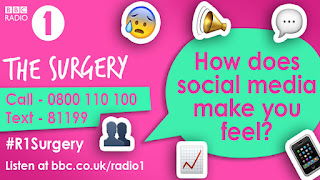Film & TV assessment: Learner response
1) Type up your feedback in full (you don't need to write the mark and grade if you want to keep this confidential).
- WWW: Some clear well structured writing with a good grasp of the texts
- EBI: Q1/2 don't answer the question in enough detail and in Q3 you've missed one of the texts.
- A range of different genres are suggested on the poster – e.g. the background is almost space (sci-fi); the silver symbol in the background alludes to comic books/Marvel universe; the woman on the left suggests martial arts or kung-fu movies – this is reinforced by the faint images in the background (man in mid-air kick on right-hand side); the helicopter in the top right hints at the war movie genre.
- The poster arguably provides a good example of pastiche: media products that imitate the style of another text, artist or time period. Although an argument can be made that Kingsman: The Secret Service is a parody (there are definitely suggestions of comedy) the poster as a whole asks to be taken seriously. In a parody, audiences would likely expect a tagline that confirms the comic nature of the film. The only text appearing here is: ‘From the director of X Men: First Class’ which would suggest the film is trying to attract an audience looking for serious, action/superhero-based entertainment.
- z
- Bricolage: the juxtaposing of old and new texts, images, ideas and narratives to create new meanings.
- Pastiche: This refers to media products that imitate the style of another text, artist or time period. Pastiche is an example of intertextuality and takes a positive view of the original source.
- Intertextuality: Intertextuality is when one media text references another media text – through genre, conventions, mise-en-scene or specific cultural references.
- Social media was important in marketing the film – Chicken did not have a marketing budget beyond the creation of the trailer and poster so Facebook, Twitter and YouTube were vital in broadcasting and sharing trailers and information about the film.
- Construction of the Chicken branding on the poster/DVD packaging etc. effective in communicating the genre and key selling points of the film – arthouse, social realism, beautiful cinematography, theme of nature etc.
1. Introduction:
- Representations reflect the social and cultural context in which they were produced to a large extent.
- Diverse range of characters to portray current life in London. This can be seen through race,class,ethnicity, family structure etc. Based in 2015- the population of London at this time was 8.5 million. The issue of immigrants ties in with this, the example of this is Quentina.
- This is also narrative realism.
- The drama is situated around a real-life street (Pepys Road), which can be more relatable to the audiences. The 'state-of-the-nation' sub-genre suggests that the contexts are reflected.
- References to real recent events, such as the financial crisis.- this lead to the increase in house prices, in 2007 the house prices decreased rapidly and it was predicted that they would take a long time to increase again, however in 2015, the average house price in London was £531,000.
- The fear of radicalism/terrorism.- the Kamal family. Muslims are presented as a threat to modern London because of the increase in attacks. Younger people are more vulnerable (social media etc.) so they can easily be radicalised by extremist content.
- Left wing ideologies- the non-British, in particular, illegal immigrant, Quentina, can be seen as a character whom which we sympathise with as she is represented in a positive way.Whereas, the British upper/middle class people are represented negatively.
- The divide in East Germany and West Germany. East Germany is downgraded compared to West Germany, this is represented through mise-en-scene. The conflicting values and ideologies, West- capitalism and East-socialism.
- This also links to the idea of binary opposition.
- Technology- the technology used in the montage scene is popular of it's time, an example of this is the Walkman. This indicates how the social and cultural context was reflected. The audiences feel nostalgia.
- Postmodernism- the exaggerated mise-en-scene and popular culture. Pastiche (montage scene).
- In conclusion, I think that representations reflect the social and cultural context in which they were produced to a large extent.

Comments
Post a Comment